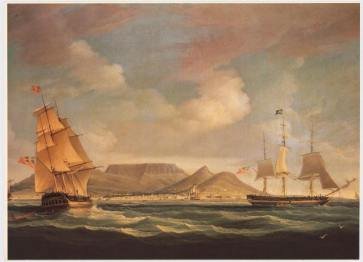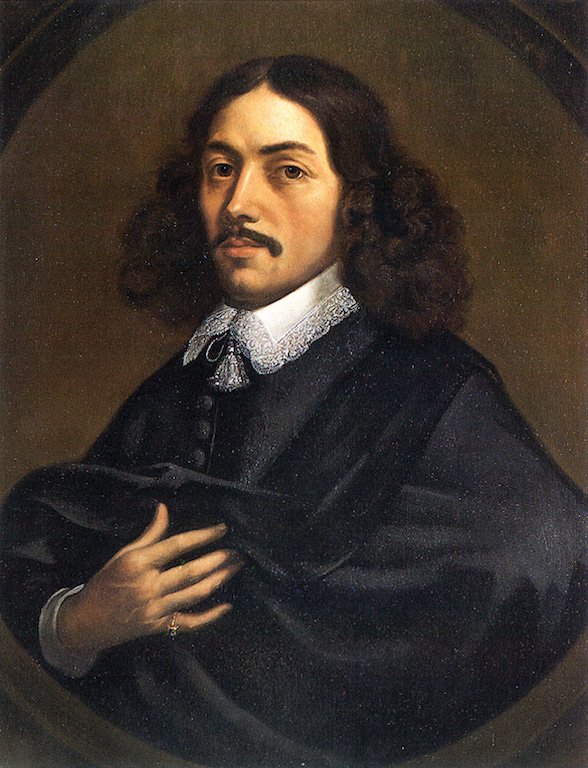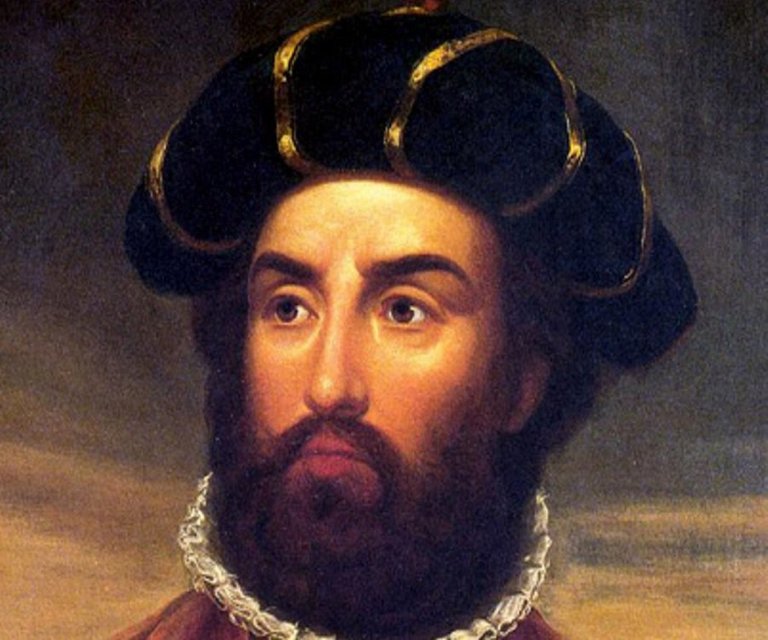JUST ANOTHER DAY IN TABLE BAY

TABLE BAY, SOUTH AFRICA
Saturday, 6 April 1652. Founder's Day at Table Bay, South Africa.
Two men on a single sloop docked on the beach and ascended Lion's Head to see whether there were any strange ships around. They were scouting on behalf of three ships close by: the Reijger, Drommedaris and Goede Hoop.
The ships hailed from the young United Netherlands Republic, who were at war with Portugal. Therefore, the 33 year old commander, Jan van Riebeeck, was hesitant to go ashore immediately when they spotted land. Rather, he sent out scouts to ensure that there were no pirates or enemy nations present in Table Bay. Shortly before dusk they were back: the bay was quiet and safe. The Reijger, Drommedaris and Goede Hoop docked and anchored in the bay and close to the coast.

JAN VAN RIEBEECK
Although Jan van Riebeeck and his people did not actually go ashore on 6 April, this day came to be known as the founder's day of the settlement.
On Sunday, 7 April 1652 a group of soldiers and seamen went ashore. Finally the people on the ships could enjoy their first fresh meal in three months, consisting of fish, and later on, also greens such as mustard leaves and sorrel.

JAN VAN RIEBEECK'S ARRIVAL AT TABLE BAY
Near the evening, Jan van Riebeeck and a few other people also went ashore. Upon going back to the ships, they were accompanied by two natives: members of the Khoi – "the great men of the universe", as they called themselves. The aim was to enquire whether they could start trading with the Khoi in order to acquire livestock. One of the two natives, named Harry, could speak a little bit of broken English. Apart from that, they used hand signals to communicate.
The objective of starting this settlement, was to provide refreshments en route between Europe and the East:
Since the earliest of times, the nations of Europe traded with India and China, mostly overland. However, since the mid 15th century, trade was greatly hampered by missions of conquest by the Turks. Portugal was already a centre of trade for oriental goods, and therefore they started looking for a different route to transport goods by sea.
In 1488, Barthomolew Dias, a Portuguese nobleman and explorer, sailed round the southernmost point of Africa. In April 1488, he discovered a cape which he dubbed the Cape of Storms because of the heavy storms that he experienced in the area. Later, King John II of Portugal renamed it the Cape of Good Hope, because Dias' discovery provided good hope for a seaway to India.

BARTHOLOMEW DIAS
In a drama called "Dias", written by Afrikaans author and poet, NP van Wyk Louw, he ends with the poignant prayer for the explorer: "En wees / by dié land, by daardie eensaam land / wat ek gevind het ... nie wou vind nie..." (And be / with this land, with that lonely land / that I found ... and did not want to find".
In this article I made extensive use of the most wonderful book about the history of the Afrikaner:
Steyn, JC. Afrikanerjoernaal – 'n Vervolgverhaal in 365 episodes. FAK, 2016.
Follow the intriguing history of Afrikaans from 6 April 1652 up to the present day.

Thanks vir die geskiedenis! Lank laas van jou gehoo. Was jy weg met vakansie?
Ja, ek was vir tien dae sonder internet...en ek het dit nie eers regtig gemis nie. Wel, miskien darem 'n bietjie! Hoop jy het 'n fantastiese 2018.
A fantastic article and a very interesting look at the early days of our beautiful country. Although colonialism got a lot wrong, it certainly did bring the world into a new and more progressed age...
Thanks for the fascinating historical facts ! Learnt a lot from this post :)
Nice article @minnaloushe !